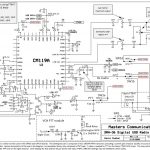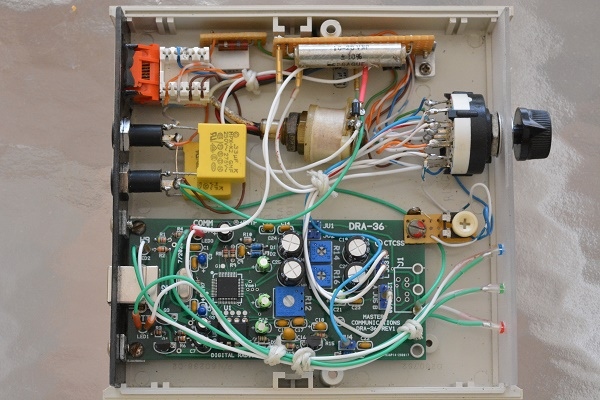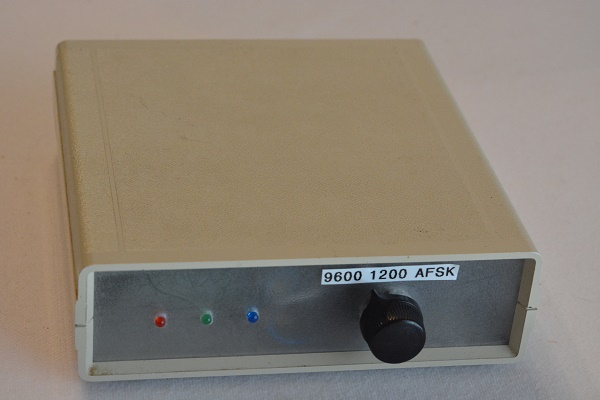Author: Don KT3V
Described is a VOX PTT circuit that can be added as a sideboard to the Masters Communications DRA-36 card. The card was purchased from Kevi n Custer as a kit.
n Custer as a kit.
In assembling the kit I left off the LEDs and the mini-DIN connector to the transeiver for the purpose of placing these items on the front and rear panel of a small plastic case and to allow wiring in of mode switches to avoid having to repatch different cables to the radio.
The mini-DIN connecter is not used, instead a female RJ45 is used to connect to the Yaesu FT847. The RJ45 is compatible with what is used for the SignaLink. The RJ45 carries Rx signal, the Tx signal, and PTT for 9600 and 1200 baud VARA FM and Winlink Packet. Fldigi modes such as MT63-2KL use the 1200 baud mode.
The AFSK connections are made to the Yaesu by a 1/8-inch phone jack. The ring carries Rx data, the tip carries Tx data and PTT (AC signal riding on DC level). The DC level must be dropped below about 0.2V to key the radio. Transistor logic levels at saturation were too high leaving rig keying erratic.
A fast relay (a reed relay) is used to key the radio. The relay ensures that the PTT line is pulled to 0V. The AFSK mode supports Fldigi modes and the VARA HF mode that typically use USB on the HF bands. Beware that some relays have a high hysteresis and will not support the fast keying rate required by VARA modes.Setup for VARA FM (9600 or 1200) is the same as for the unmodified DRA-36, Rx and Tx levels are set by trim-pots for these modes, there are no front panel adjustments.
PTT for VARA FM is handled by the RA board, be sure to tick the RA box.
Setup for Fldigi requires the PTT tone be placed on the right channel and the data signal goes to the left channel.
R16 adjusts the left channel signal level to 400mV for AFSK (the spec for the Yaesu). An additional 5K trim-pot drops the 400mV down to 40mV for the FM 1200 baud VARA FM and Packet modes. R14, the right channel level, is set to max output for proper VOX PTT for AFSK and for 9600 baud VARA FM. Higher output would be nice, but this requires additional, externally powered amplifiers found on the DRA-65 and DRA-70 boards.


